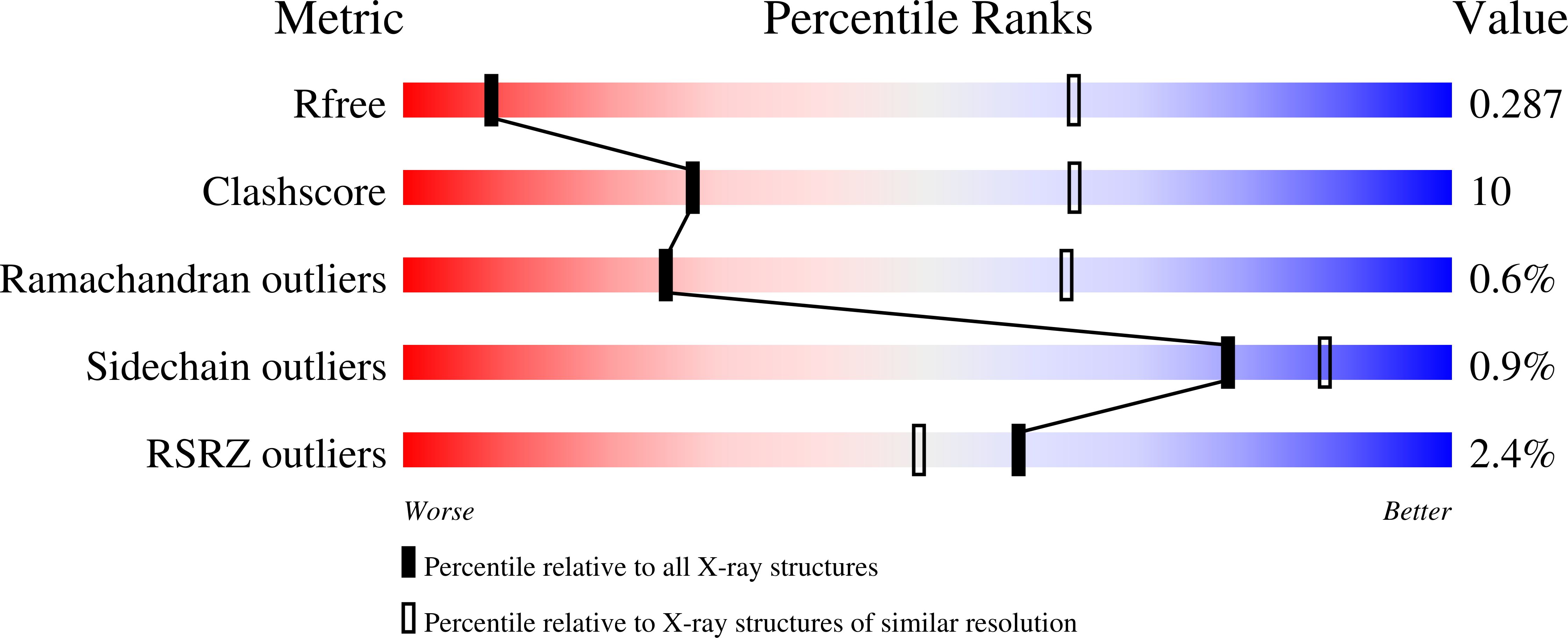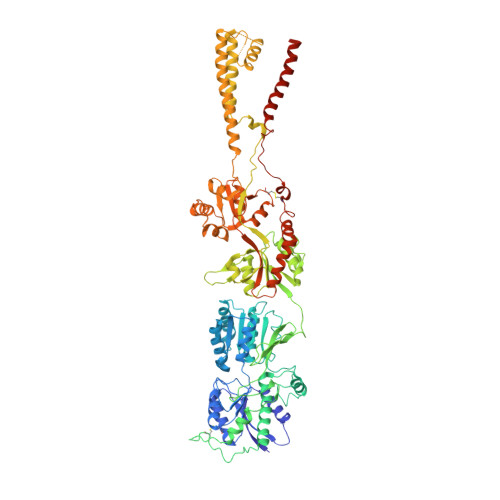Structural Bases of Noncompetitive Inhibition of AMPA-Subtype Ionotropic Glutamate Receptors by Antiepileptic Drugs.
Yelshanskaya, M.V., Singh, A.K., Sampson, J.M., Narangoda, C., Kurnikova, M., Sobolevsky, A.I.(2016) Neuron 91: 1305-1315
- PubMed: 27618672
- DOI: https://doi.org/10.1016/j.neuron.2016.08.012
- Primary Citation of Related Structures:
5L1B, 5L1E, 5L1F, 5L1G, 5L1H - PubMed Abstract:
Excitatory neurotransmission plays a key role in epileptogenesis. Correspondingly, AMPA-subtype ionotropic glutamate receptors, which mediate the?majority of excitatory neurotransmission and contribute to seizure generation and spread, have emerged as promising targets for epilepsy therapy. The most potent and well-tolerated AMPA receptor inhibitors act via a noncompetitive mechanism, but many of them produce adverse side effects. The design of better drugs is hampered by the lack of a structural understanding of noncompetitive inhibition. Here, we report crystal structures of the rat AMPA-subtype GluA2 receptor in complex with three noncompetitive inhibitors. The inhibitors bind to a novel binding site, completely conserved between rat and human, at the interface between the ion channel and linkers connecting it to the ligand-binding domains. We propose that the inhibitors stabilize the AMPA receptor closed state by acting as wedges between the transmembrane segments, thereby preventing gating rearrangements that are necessary for ion channel opening.
Organizational Affiliation:
Department of Biochemistry and Molecular Biophysics, Columbia University, 650 West 168(th) Street, New York, NY 10032, USA.
















